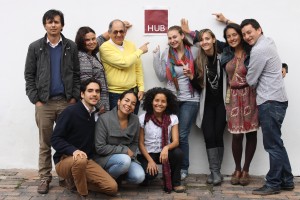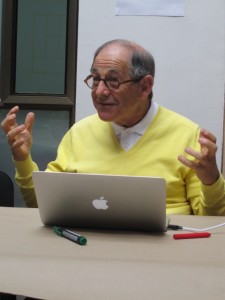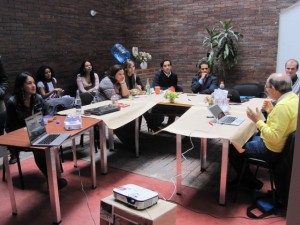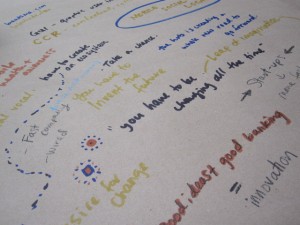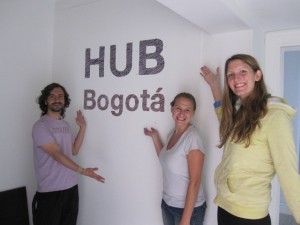 As part of my internship assignment here in Bogota, my colleague and I have been asked to seek out social entrepreneurs that fit a specific set of criteria. Our research has discovered that there is an ample amount of social businesses in Colombia, but many do not consider themselves to have a social purpose, and further, have no idea how to effectively measure their impact. Being a part of the Hub here has allowed us to make some unique connections and meet some of these social entrepreneurs.
As part of my internship assignment here in Bogota, my colleague and I have been asked to seek out social entrepreneurs that fit a specific set of criteria. Our research has discovered that there is an ample amount of social businesses in Colombia, but many do not consider themselves to have a social purpose, and further, have no idea how to effectively measure their impact. Being a part of the Hub here has allowed us to make some unique connections and meet some of these social entrepreneurs.
One of these businesses is called Tech4Riders, which produces airbag jackets for motorcycle riders. The founder and director, German Acevedo Ordña, had been working for the Colombian Navy, as an engineer hoping to minimize wartime deaths. What he discovered, was that more military personnel were dying from motorcycle crashes than from war-related incidences. In fact, the highest cause of death in Colombia for those aged 15 – 30 is motorcycle accidents. With this information, Mr. Ordña decided that he needed to do something to start saving lives. Although Tech4Riders is not the only company in the world that is producing motorcycle airbags, it is the only company in the Americas, and he is trying to develop the technology at a low enough price, that Colombians will actually buy the vital piece of equipment. Currently, there are jackets on the market in Japan and Europe that cost around US$800, or about 1/3 of the average yearly salary for a Colombian household.
So how does this technology work? The airbag is fitted into a normal looking motorcycle jacket. There is a cord that you can use to connect the jacket to the ignition of the motorcycle (imagine the same device used on a jet ski, if you get thrown off, the jet ski automatically powers down). If a motorcyclist gets thrown from his motorcycle at enough velocity, the jacket will unlock and inflate in .3 seconds.
 It is wonderful to see the rise of social businesses in Colombia, but what is still missing is availability to financing, especially local financing. Banks in Latin America tend to loan at very high interest rates. There are investment funds here in Colombia, but many are looking to make multimillion dollar investments in areas such as oil and coal, or mining. The organization that I am working for, Village Capital, is investigating whether Colombia would be a good environment to invest in start-up social businesses. In my opinion, there is sufficient evidence that the innovative social entrepreneurs exist here, I think the only remaining question is whether the financial climate is open to investments from abroad. I believe it is, and I believe that social entrepreneurs such as Mr. Ordña will get his opportunity to save lives in Colombia and the Americas.
It is wonderful to see the rise of social businesses in Colombia, but what is still missing is availability to financing, especially local financing. Banks in Latin America tend to loan at very high interest rates. There are investment funds here in Colombia, but many are looking to make multimillion dollar investments in areas such as oil and coal, or mining. The organization that I am working for, Village Capital, is investigating whether Colombia would be a good environment to invest in start-up social businesses. In my opinion, there is sufficient evidence that the innovative social entrepreneurs exist here, I think the only remaining question is whether the financial climate is open to investments from abroad. I believe it is, and I believe that social entrepreneurs such as Mr. Ordña will get his opportunity to save lives in Colombia and the Americas.

